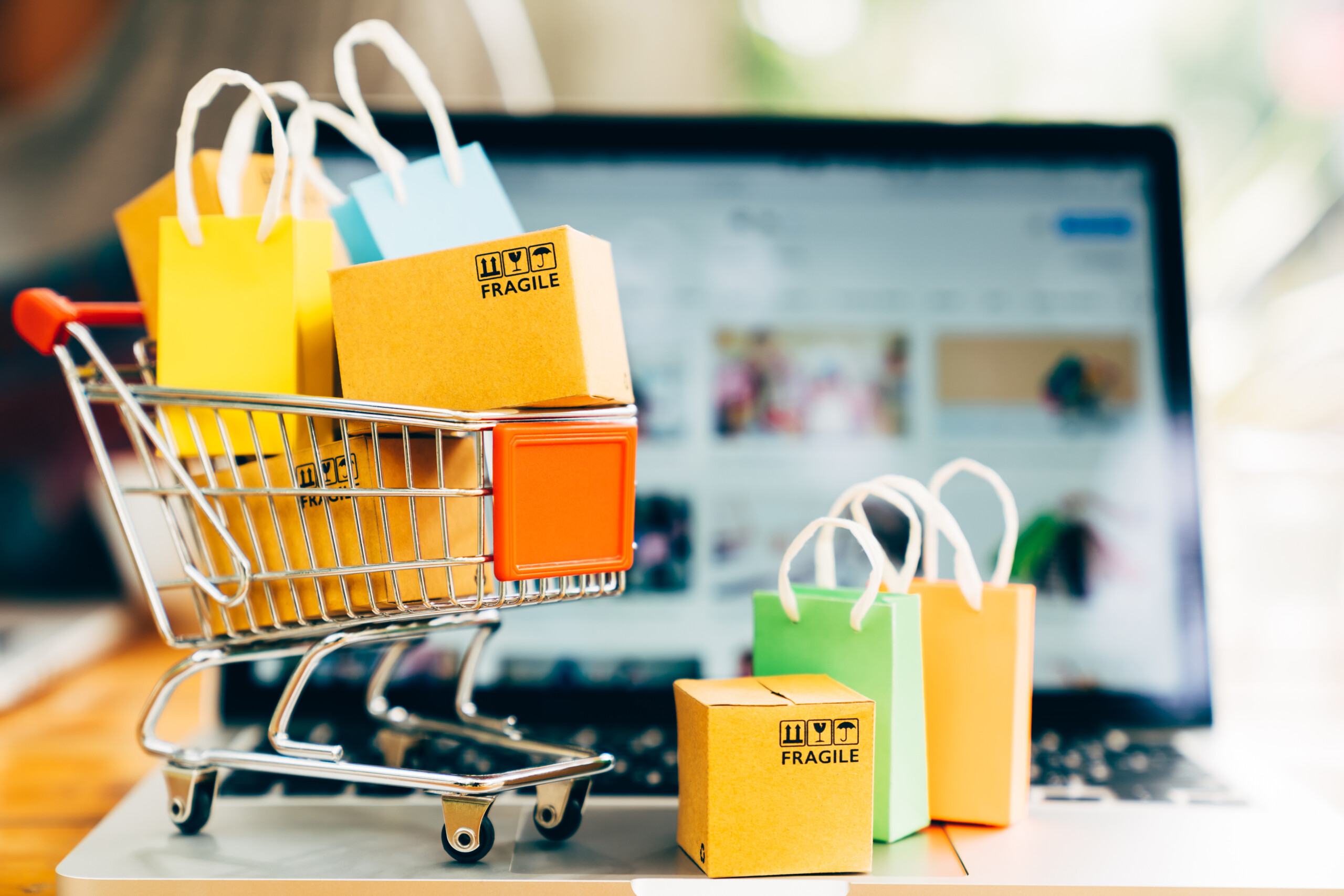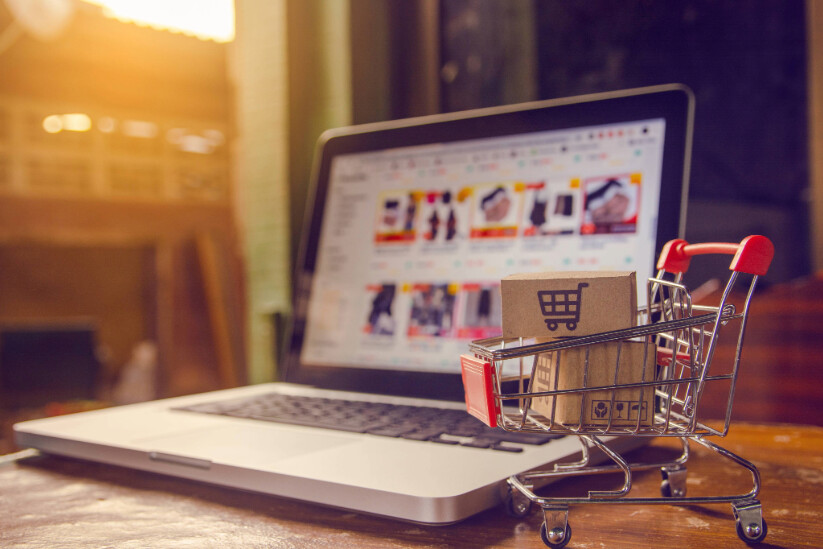Ecommerce Trends 2025: 10,000 consumers do not lie

Every year at the turn of the year, they spring up like mushrooms: texts and videos about the important, the most important, the absolutely most important B2B and B2C ecommerce trends for the still young year. (Self-proclaimed) experts speak in front of cameras, give interviews, or type away – one usually hears less about concrete sources. In the end, no one is really interested at the end of the year whether even a single hot take has come true, right? The financial service provider “Mollie,” on the other hand, has taken concrete action and surveyed around 10,000 consumers across Europe. The resulting Ecommerce Report provides valuable insights into current purchasing behavior and emerging trends in online retail for 2025.
In this blog article, we will take a look at the results for Germany, summarize the most important data and facts, and place them in the dynamic environment of ecommerce.
Ecommerce Trends 2024 and 2025: Purchasing habits, customer loyalty, and other exciting insights
As one of the largest markets, the German online retail sector is a central component of the European ecommerce landscape and also an important indicator of consumer opinions and sentiments. For the study, Mollie, in collaboration with the research agency Coleman Parkes, surveyed around 10,000 consumers – 2,000 each in Germany, France, the Netherlands, Belgium, and the United Kingdom.
To obtain the most representative picture of the situation in online retail, great emphasis was placed on having a diverse sample regarding age group, gender, income, etc. In the following, we will go into detail about the various categories of the report.
General economic situation
Industry and politics are currently facing many challenges and have a rather pessimistic view of the forecasts for economic development. In contrast, the results show that consumers are more positive, as the value decreased less sharply compared to the previous year than one might have expected. After all, 42% of respondents expect an improvement in the economic situation, only five percentage points less than in 2023 (47%).

The current economic situation is also assessed as relatively good:
In comparison: In the previous year, 54% gave positive to neutral assessments and 45% were negatively inclined.
It may also be surprising that the number of online shoppers who want to “spend much more” has increased from 7% to 12%. The vast majority of respondents indicated that they want to spend the same or more (81%). Only 19% expect that they will spend less. These are pleasantly good ecommerce trends for 2025.
Shopping habits and channels
Where and how do German consumers shop online? This question is particularly relevant for multichannel retailers. Clearly leading are trading platforms like Amazon. 51% of respondents indicated that they start their search directly with the large online retailers. 40% also search using a search engine like Google, and 36% also buy directly from the online shop of the provider.

Less popular than in international comparison is the social aspect among German online shoppers:
More important to Germans, however, seems to be the price – 29% visit a comparison site before making a purchase (average = 24%).
Accordingly, the results regarding the most popular social selling channels are also relativized. While over 30% indicated that they use Facebook, YouTube, and Instagram, the search through Amazon and Google still seems to be the most popular. Thus, nothing changes with the ecommerce trends for 2025.
Loyal customers
Who wouldn’t want to build a loyal customer base that keeps returning to their own online shop or repeatedly purchases through Amazon? The study also inquired about the factors that contribute to this.
Particularly important for German consumers are free shipping (85%), the available payment methods (81%), as well as free returns (81%) and price (80%). But the website and customer support also play a significant role.
However, these aspects are somewhat less important to German shoppers on average than to their European neighbors. Germans, on the other hand, increasingly trust a simple, smooth purchasing process. Registration and login, as well as product search, are often more important than, for example, various delivery options or loyalty programs.

It is also fitting that 67% of respondents prefer PayPal as a payment method, as it is simple, straightforward, and fast. Trailing behind are purchase on invoice (40%), card payment (36%), as well as direct debit and bank transfer (31% and 29%, respectively). SOFORT transfer, Google / Apple Pay, or Giropay and installment purchase play hardly any role.
Abandoned shopping carts
“For what reasons would you abandon your purchase or shopping cart during the ordering process?” In response to this question, most of the German respondents indicated that high shipping costs or fees are the most important reason for an abandoned shopping cart (55%). Concerns about payment security are also highly rated (44%). Additionally, if the preferred payment method is missing (41%) or the bank card is not accepted (28%), this can lead to abandonment.

Other reasons were …
That unexpected additional costs are the top reason for an abandoned order process is not surprising, considering how price-conscious the German online shopper is.
Advertising
How can online retailers attract new customers for their products? In the German ecommerce sector, discount promotions when leaving a retailer’s website seem to be the most promising (39%). Also, newsletters (34%), retargeting (32%), reminder emails for existing shopping carts (26%), and search engine advertising (24%) are relatively well received by consumers.

Personalized recommendations or the display of related products, influencer advertising, or social media ads are, on the other hand, rather unpopular. Regarding the ecommerce trends for 2025, there seems to be less movement on this point, as these results generally align with the channels through which German consumers shop. There, too, social media and influencers were rather secondary compared to large trading platforms like Amazon or search engines like Google.
Tips for your ecommerce business: Trends 2025

Staying up to date is more important than ever in such a dynamic environment as online retail. Below, we provide you with the key recommendations from our years of experience and the above study results that will help you further scale your business.
Fazit: Ecommerce Trends 2025
The results of the consumer survey by Mollie impressively show how dynamic and demanding the eCommerce market remains in 2025. Whether it is about optimized pricing strategies, mobile shopping habits, or the use of AI – retailers who adapt and invest in innovative technologies will benefit from these trends.
It becomes particularly clear: consumers desire a shopping experience that is simple, transparent, and price-conscious. At the same time, international markets and new technologies offer exciting opportunities for retailers who are willing to adapt their strategies and explore new paths.
While large trading platforms continue to dominate, the opportunity for smaller companies lies in occupying niches, creating personal experiences, and focusing on trust and efficiency. With clear priorities, strategic investments, and an open eye for upcoming changes, 2025 can become a year of growth and innovation for many retailers.
For one thing is certain: consumer demands are changing, and many eCommerce trends will be more relevant than ever in 2025 – those who set the right course today will succeed in tomorrow’s competition.
Häufig gestellte Fragen
The key trends include the use of AI for personalized shopping experiences, the increasing importance of mobile commerce and international marketplaces, as well as transparent pricing and flexible payment options such as “Buy Now, Pay Later”.
German buyers place great importance on free shipping, a simple purchasing process, and common payment methods such as PayPal. Additionally, a transparent checkout without unexpected additional costs plays a crucial role.
Through smooth customer service, discounts for repeat purchases, personalized recommendations, and targeted retargeting campaigns. Clear communication and flexible returns further strengthen customer trust.
Image credits: © Business Pics – stock.adobe.com / © ImageKing – stock.adobe.com







